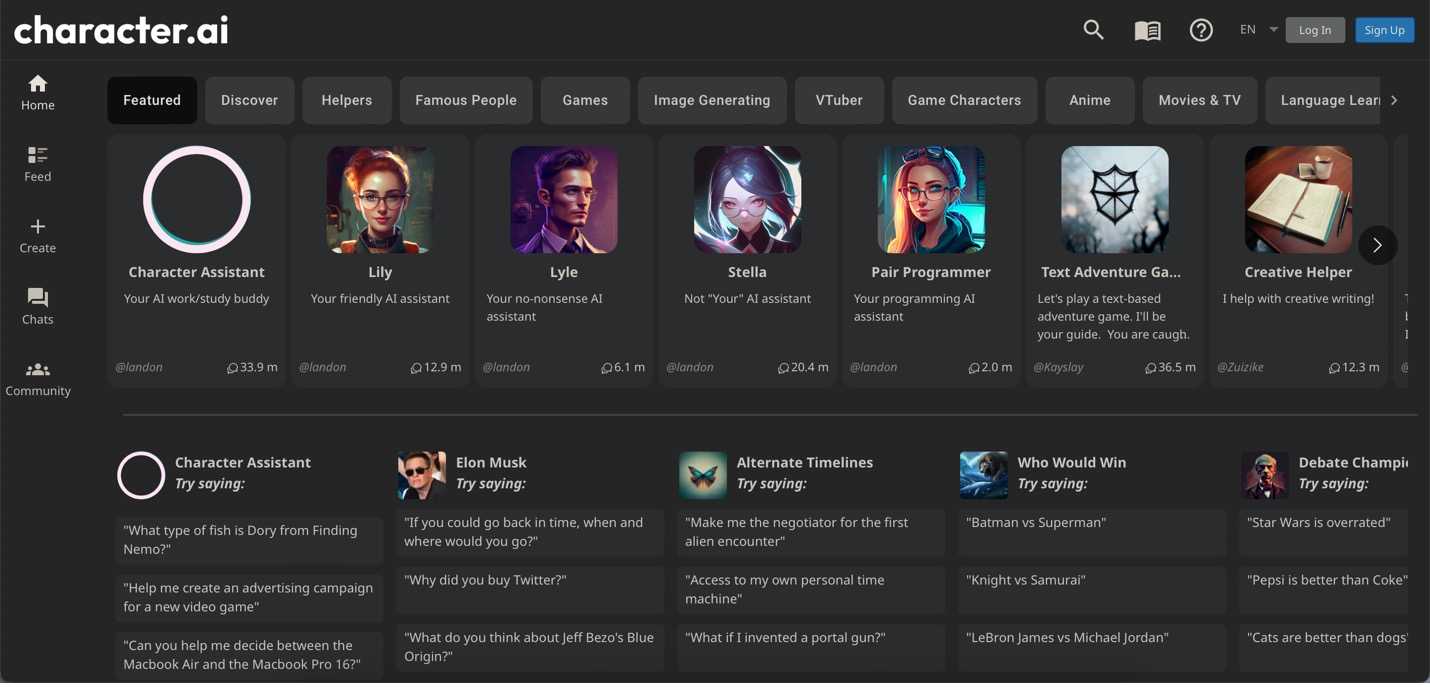In recent years, artificial intelligence (Beta Character AI) has revolutionized multiple fields, from healthcare to entertainment. One fascinating development in the world of AI is the creation and evolution of Beta Character AI, a concept that merges machine learning with the development of characters designed to interact with humans in increasingly sophisticated ways. This article will delve deep into what Beta Character AI is, its applications, challenges, and future potential.
What Is Beta Character AI?
The term “Beta Character AI” refers to an evolving category of artificial intelligence that focuses on creating AI-powered characters. These characters are not only reactive but also proactive in terms of interaction and decision-making. Beta Character AI often exists in a semi-finished form, hence the “Beta” term, which is used in technology to indicate a product that is in the testing or refinement phase.
These AIs are designed to mimic human behaviors, emotions, and interactions. For example, they can hold conversations, express emotions, and make decisions based on user input. Beta versions of such AI systems are typically being tested for their usability, adaptability, and effectiveness in real-world applications.
As developers refine these systems, the goal is to achieve AI characters that are capable of more dynamic, lifelike interactions with users, bridging the gap between human and machine communication.
The Evolution of Beta Character AI
Beta Character AI has been around for a while, but the introduction of “Beta” versions marks a significant milestone in the development of more sophisticated systems. Early AI characters were simple, following pre-programmed scripts and responding to a limited set of commands. However, with the advancement of deep learning, natural language processing (NLP), and neural networks, these characters can now understand context, engage in more meaningful conversations, and even show some form of personality.
The term “Beta” is indicative of the iterative process in which these characters evolve. Just like software or apps that are tested before their official release, Beta Character AI undergoes stages of testing, feedback, and optimization. In this phase, it is common to see bugs or inconsistencies, which are worked out in future updates.

Key Features of Beta Character AI
1. Natural Language Understanding
One of the most important features of Beta Character AI is its ability to understand and generate natural language. This involves the AI character interpreting user input in the form of text or speech and responding appropriately. This goes beyond simple command-based interactions, allowing for fluid conversations that seem natural.
Natural language understanding (NLU) plays a critical role in Beta Character AI’s ability to hold a coherent and intelligent conversation. AI models like OpenAI’s GPT and Google’s BERT are prime examples of models that enhance the NLU capabilities of Beta Character AIs. These models can understand nuances, context, and even sentiment in language, making the AI character appear more human-like.
2. Emotional Intelligence
Another groundbreaking feature of Beta Character AI is emotional intelligence. While early AI characters could only simulate basic emotions, modern Beta Character AIs are designed to understand and react to human emotions. This includes recognizing feelings such as happiness, sadness, anger, or frustration based on a user’s tone of voice, choice of words, or even facial expressions.
This emotional understanding helps improve the quality of interactions. For instance, if a user expresses frustration, the AI might respond with empathy, offering support or changing the direction of the conversation. This not only makes the AI character more relatable but also more effective in customer service, mental health support, and other fields where emotional sensitivity is essential.
3. Context-Aware Interaction
Beta Character AI is capable of maintaining context across multiple interactions. This means that the AI doesn’t forget previous conversations or context, allowing for more cohesive dialogues. For example, if a user asks about a specific topic in one conversation and returns later, the AI can pick up from where the last conversation left off.
Context-aware interaction is vital for creating a personalized experience. It makes the character feel like it remembers the user’s preferences, past questions, and overall relationship with the user. This capability is particularly useful in applications such as virtual assistants, online customer service agents, and even gaming, where character continuity is essential for immersion.
Applications of Beta Character AI
Beta Character AI is not just a concept confined to laboratories or academic research; it is already being used in various fields to improve user experiences, create engaging content, and even assist in business operations.
1. Virtual Assistants and Customer Support
One of the most popular applications of Beta Character AI is in virtual assistants like Siri, Alexa, or Google Assistant. These virtual assistants have evolved from simple command-response tools to AI-powered characters capable of nuanced conversations, making them indispensable in daily life.
In customer service, Beta Character AIs are used to provide real-time assistance to customers. These systems can handle basic inquiries, resolve issues, and even escalate problems to human agents when necessary. The Beta versions of these AI systems are still being refined, with companies continually working to enhance their ability to handle complex issues with empathy and intelligence.
2. Entertainment and Video Games
Beta Character AIs are also making waves in the entertainment and gaming industries. In video games, AI-controlled characters can now engage in conversations with players, offer quests, and react dynamically to player choices. These characters are designed to be more interactive and emotionally reactive, creating a more immersive experience.
In the realm of film and television, AI is being used to create virtual characters that interact with human actors or audiences. These characters can be used in live performances, virtual reality experiences, or even as part of AI-generated narratives. The possibilities are endless, and as Beta Character AI continues to improve, it is expected that these digital beings will become more central to the entertainment landscape.
3. Healthcare and Therapy
Another growing field where Beta Character AI is being implemented is in healthcare, particularly in mental health support. AI characters are being used as virtual therapists or companions to help people manage stress, anxiety, depression, or other mental health challenges. These characters are designed to engage in therapeutic conversations, offering cognitive behavioral therapy (CBT) or simple support through dialogue.
The emotional intelligence of Beta Character AI allows it to offer a level of empathy that traditional chatbot systems cannot provide. This makes it an invaluable tool for anyone seeking a safe space for conversation without the stigma sometimes associated with mental health treatment.
Challenges and Limitations of Beta Character AI
Despite the promise and potential of Beta Character AI, there are several challenges and limitations that developers face as they work to refine these systems.
1. Ethical Considerations
One of the most pressing concerns surrounding Beta Character AI is the ethical implications of using AI characters in various applications. As these characters become more lifelike, there is a risk of them being used to manipulate emotions, mislead users, or exploit vulnerabilities. For example, AI characters in customer service could mislead users into thinking they are speaking to a real human when they are not.
Ethical concerns also arise in the realm of data privacy. AI characters collect vast amounts of data to tailor interactions and responses. It is crucial to ensure that this data is handled securely and that users’ privacy is respected.
2. Emotional Overload and Manipulation
Another limitation is the potential for emotional overload. As Beta Character AIs become more emotionally intelligent, they can potentially manipulate emotions in ways that may not be fully understood or intended by developers. Users might become overly attached to AI characters or experience emotional distress due to the way the AI interacts with them.
3. Accuracy and Reliability
While Beta Character AIs have improved significantly, they are still not perfect. The AI systems might misunderstand certain queries, fail to recognize subtle emotional cues, or provide responses that are contextually inappropriate. These limitations need to be addressed before these systems can be fully integrated into high-stakes fields like healthcare or legal advice.
The Future of Beta Character AI
The future of Beta Character AI looks incredibly promising. As AI technology continues to improve, we can expect these characters to become even more lifelike and intelligent. They may become central to industries like education, personal assistants, entertainment, and even autonomous vehicles.
With advancements in machine learning, AI is only going to get better at understanding human behavior, emotions, and language. As Beta Character AIs evolve from testing phases to full-fledged systems, they will play an increasingly important role in shaping human-computer interaction in the years to come.
Conclusion
Beta Character AI represents the cutting edge of artificial intelligence development. These AIs are designed to bridge the gap between human and machine interaction, offering users a more personalized, emotional, and contextually aware experience. While challenges remain, the potential for Beta Character AI is vast, and its applications will undoubtedly continue to expand in the coming years. As we look toward the future, it’s clear that these AI-powered characters will play a pivotal role in transforming how we communicate, interact, and experience the world around us.




